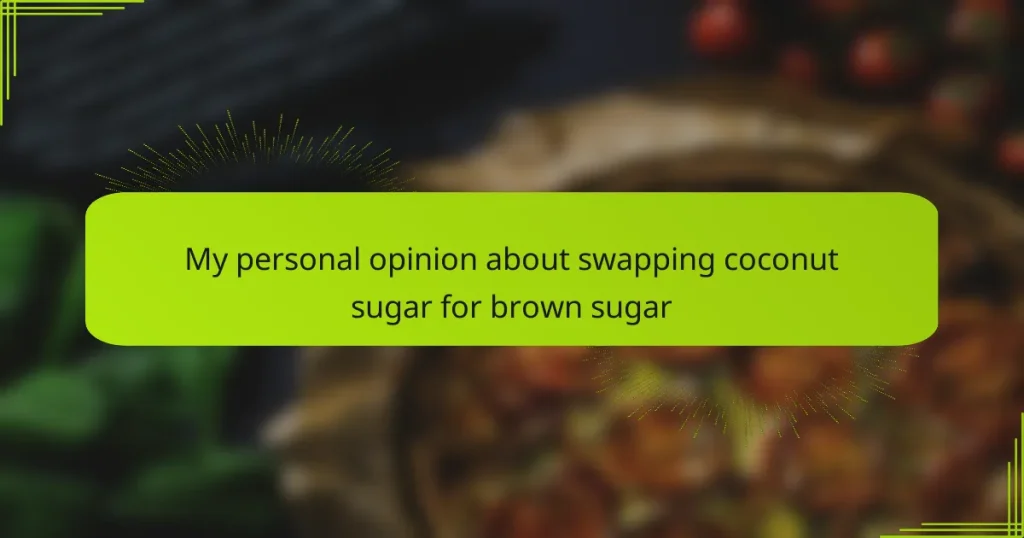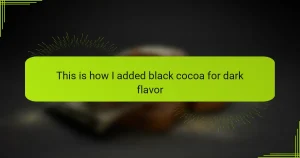Key takeaways
- Coconut sugar offers a lower glycemic index and contains small amounts of minerals, making it a healthier alternative to brown sugar.
- The texture and moisture of desserts can change significantly when substituting coconut sugar for brown sugar, potentially resulting in drier or crumblier baked goods.
- Coconut sugar adds a subtle caramel flavor that enhances desserts without overpowering other ingredients, providing a refined sweetness.
- To successfully substitute coconut sugar in recipes, consider adjusting liquid ingredients and measuring by weight for accuracy.
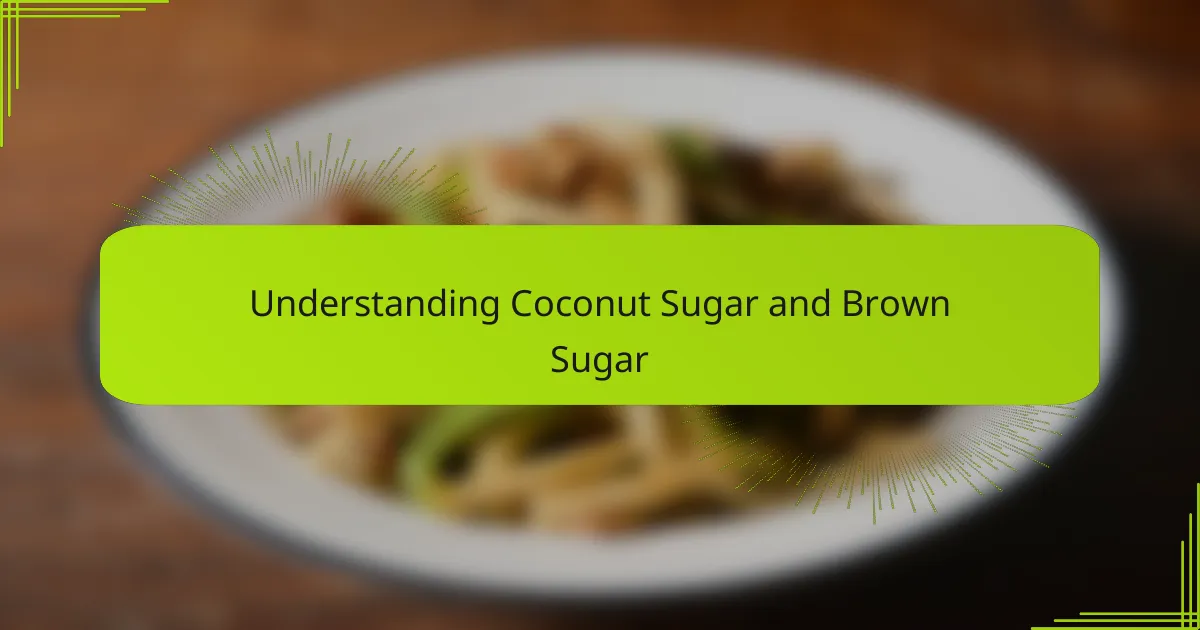
Understanding Coconut Sugar and Brown Sugar
When I first stumbled across coconut sugar, I was curious about how it stacked up against the familiar brown sugar I always used in my baking. Coconut sugar comes from the sap of coconut palm trees and has a subtle caramel flavor, which feels a bit more complex than the straightforward sweetness of brown sugar. Have you ever noticed how brown sugar sometimes adds a molasses richness that’s hard to replicate? That’s because brown sugar is basically white sugar mixed with molasses, giving it its signature moist texture and deep taste. Understanding these differences helped me appreciate what each sugar brings to a dessert, rather than thinking of them as simple substitutes.
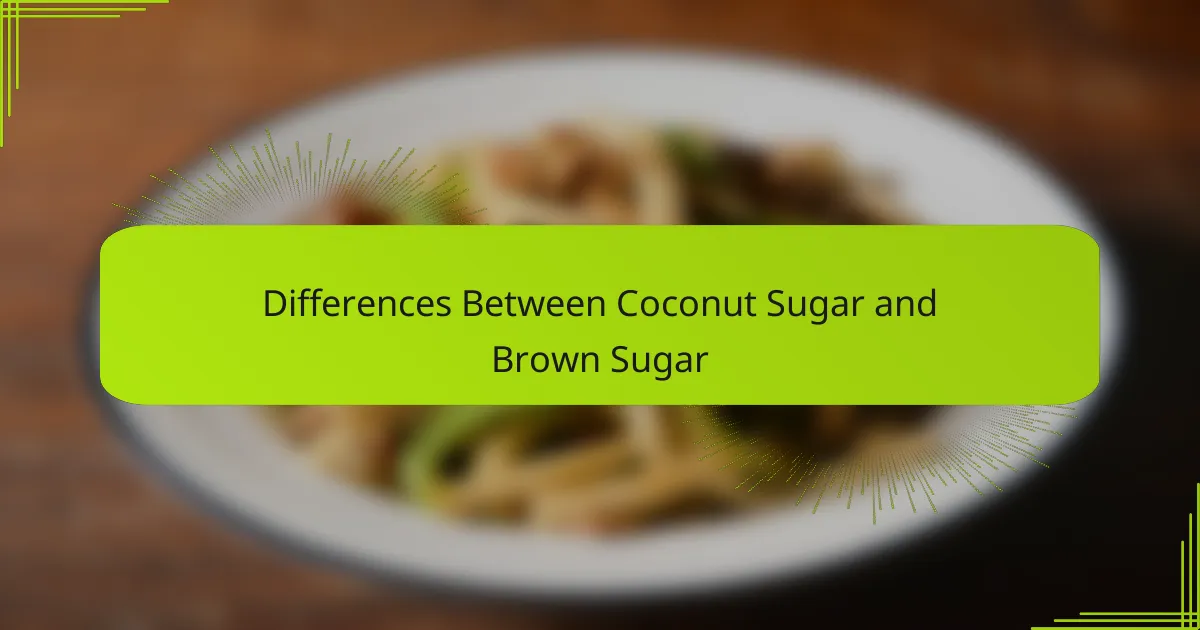
Differences Between Coconut Sugar and Brown Sugar
One thing I quickly realized is that the texture between coconut sugar and brown sugar isn’t just a minor detail—it actually changes how they behave in recipes. Coconut sugar tends to be drier and grainier, which means it doesn’t clump or pack the same way brown sugar does. Have you ever had to break apart a stubbornly sticky brown sugar clump? Coconut sugar saves you that hassle, but it also means you might need to adjust the moisture in your batter a bit.
Another difference I noticed is the color and flavor impact. Brown sugar’s rich, dark hue and intense molasses notes can deepen the flavor profile of cakes and cookies, almost like adding a shadow of warmth. Coconut sugar, on the other hand, brings a lighter golden tone with a hint of caramel that feels gentler and more nuanced. Sometimes, that subtlety makes a dessert taste more sophisticated—or at least, that’s what I tell myself when I’m trying to get creative in the kitchen.
Nutritionally, I find myself drawn to coconut sugar because of its lower glycemic index. This means it spikes your blood sugar less dramatically, which is something I care about, especially when sharing treats with family. Still, I wonder if these benefits really translate to desserts where sugar is just one component among many. Either way, knowing these differences makes me feel more informed and intentional about my sugar swaps.
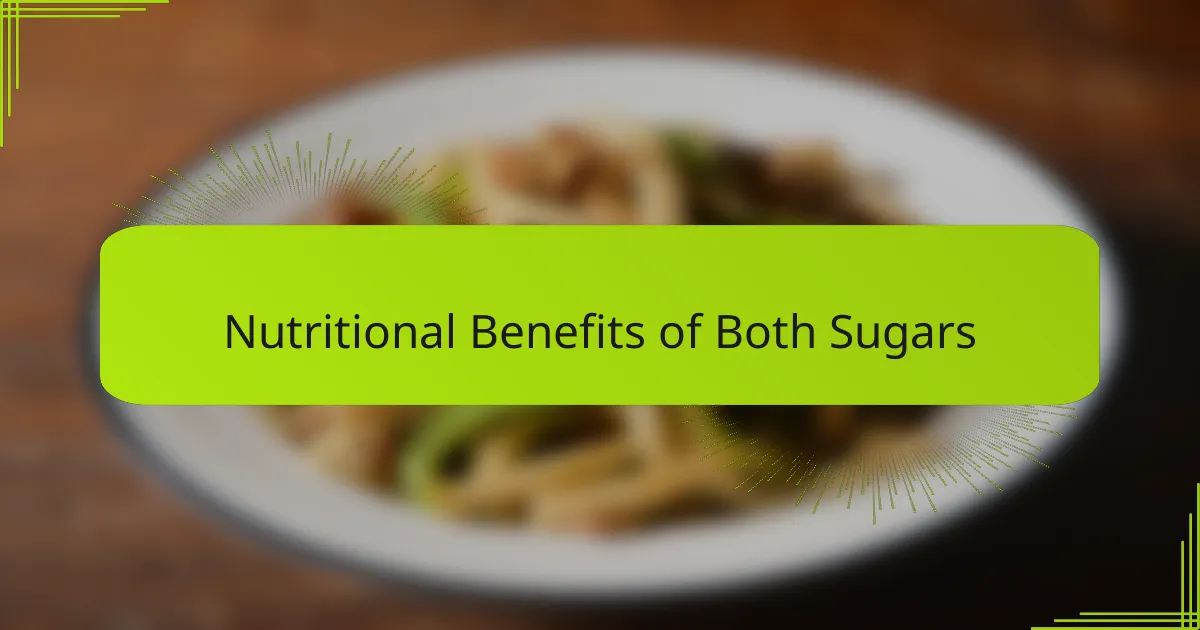
Nutritional Benefits of Both Sugars
When I compare the nutritional benefits of coconut sugar and brown sugar, I often think about how coconut sugar contains small amounts of minerals like iron, zinc, and potassium. While these aren’t game-changers in the grand scheme of a dessert, it does make me feel like I’m adding a tiny, healthy touch to my recipes. Have you ever noticed how even small nutritional perks can make a difference in how you view indulgent treats?
Brown sugar, on the other hand, offers a bit less in terms of minerals but contains molasses, which gives it trace amounts of calcium, iron, and magnesium. Though I wouldn’t rely on brown sugar for these nutrients, I appreciate the subtle nutritional value it adds naturally through molasses. It’s a reminder that not all sugars are created equal, even if their main role is sweetness.
What really sticks with me, though, is the difference in glycemic index—coconut sugar scores lower, meaning it has a gentler effect on blood sugar levels. As someone who watches their energy highs and lows closely, I find this encouraging. Sometimes, choosing coconut sugar feels like a small, smart step toward balance, especially when baking for family and friends who might appreciate a less intense sugar rush.
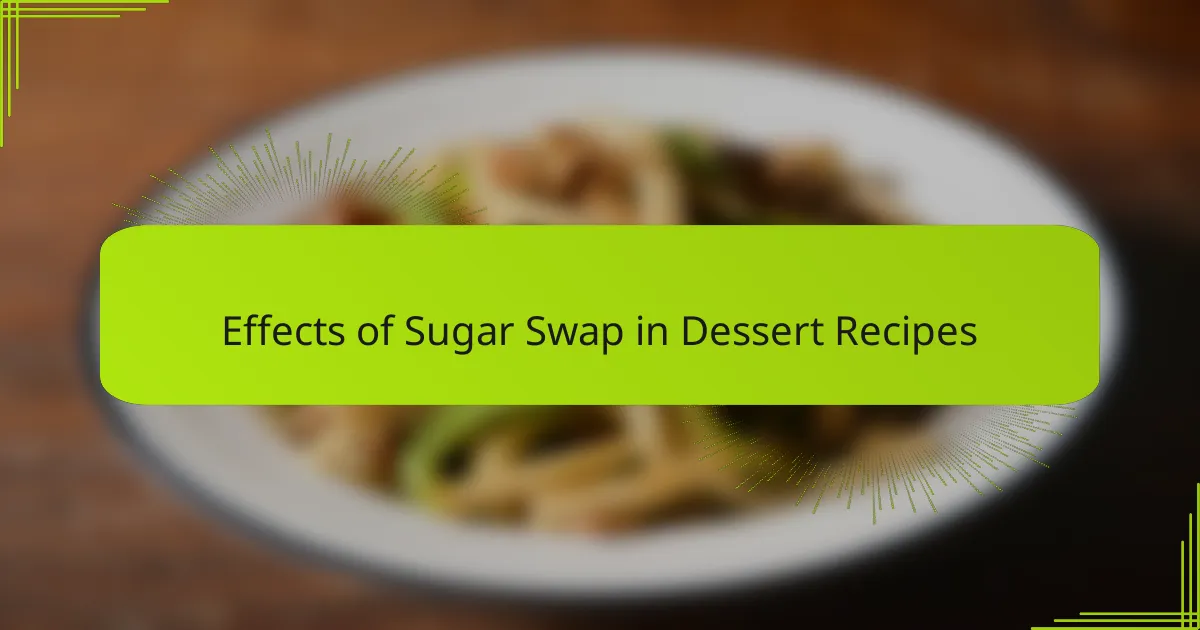
Effects of Sugar Swap in Dessert Recipes
Swapping brown sugar for coconut sugar in a dessert recipe definitely changes the texture and moisture of the final product. I’ve noticed that when I use coconut sugar, my cookies sometimes come out a bit drier or crumblier than when I stick with brown sugar’s molasses-rich moisture. It made me realize that sugar isn’t just about sweetness—it plays a key role in how a dessert holds together.
Flavor-wise, the swap introduces a subtle shift that I find quite refreshing. Coconut sugar’s caramel notes add a gentle warmth without overpowering the other ingredients, unlike brown sugar’s deep molasses flavor which can sometimes dominate. Have you ever baked something and thought it tasted sweeter but less complex? That’s the difference a sugar swap can bring—it’s a balancing act between complexity and simplicity.
One surprising effect I experienced was how the color of my desserts changed. Coconut sugar lends a lighter, golden hue compared to the darker tone brown sugar gives off. This isn’t just about looks; it subtly influences how we perceive flavor before even taking a bite. For me, seeing a lighter cake often means expecting a gentler sweetness, which somehow makes the treat feel a bit more delicate and special.
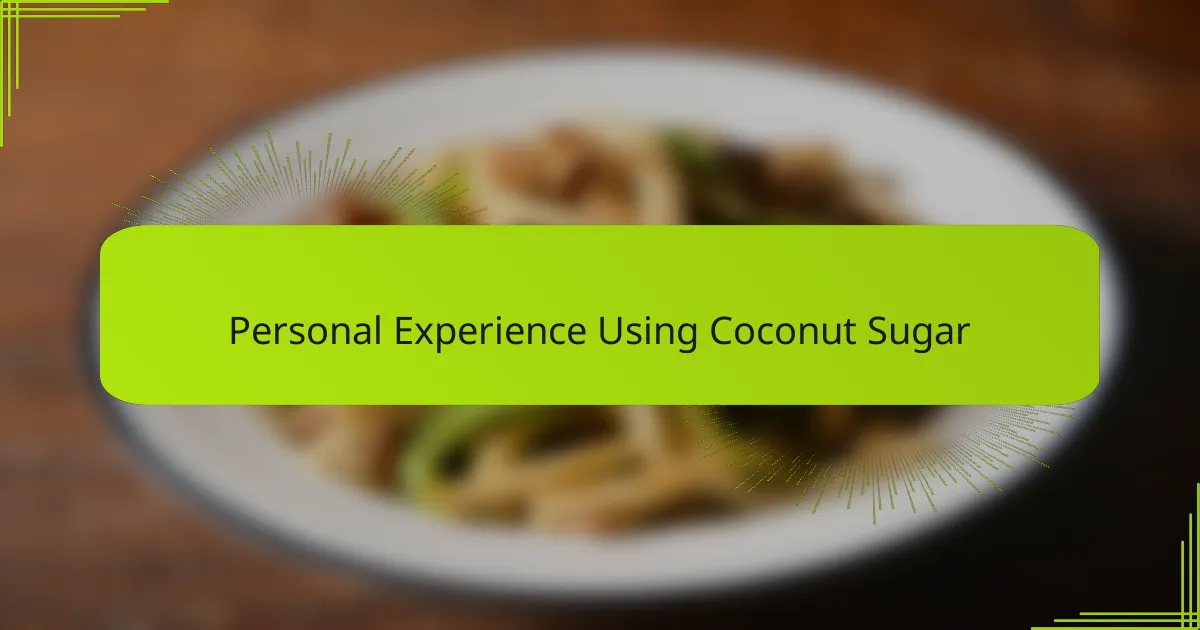
Personal Experience Using Coconut Sugar
Using coconut sugar for the first time felt like venturing into new territory in my kitchen. I remember baking chocolate chip cookies and being intrigued by how the dough looked less sticky and more granular than usual. It made me wonder—would this texture difference affect the chewiness I love in my cookies? Spoiler alert: they turned out a touch drier, but in a way that gave them an interesting crispness I hadn’t expected.
One thing that really surprised me was the flavor nuance coconut sugar added. At first bite, I noticed a softer caramel undertone that didn’t overpower the chocolate or vanilla in the recipe. It felt like the sweetness was more balanced, almost like the desserts were wearing a subtle flavor suit instead of an in-your-face molasses jacket. Have you ever had a dessert that felt comforting and understated at the same time? That’s what this felt like to me.
But beyond taste and texture, there was something about using coconut sugar that made me feel more mindful in my baking. Knowing it has a lower glycemic index gave me a sense of doing something a little healthier without sacrificing indulgence. I found myself reaching for it when baking for my family, thinking, “This is a small swap, but maybe it makes those treats a bit kinder to our bodies.” It’s a little mindset shift that added a sweet layer to the whole experience.
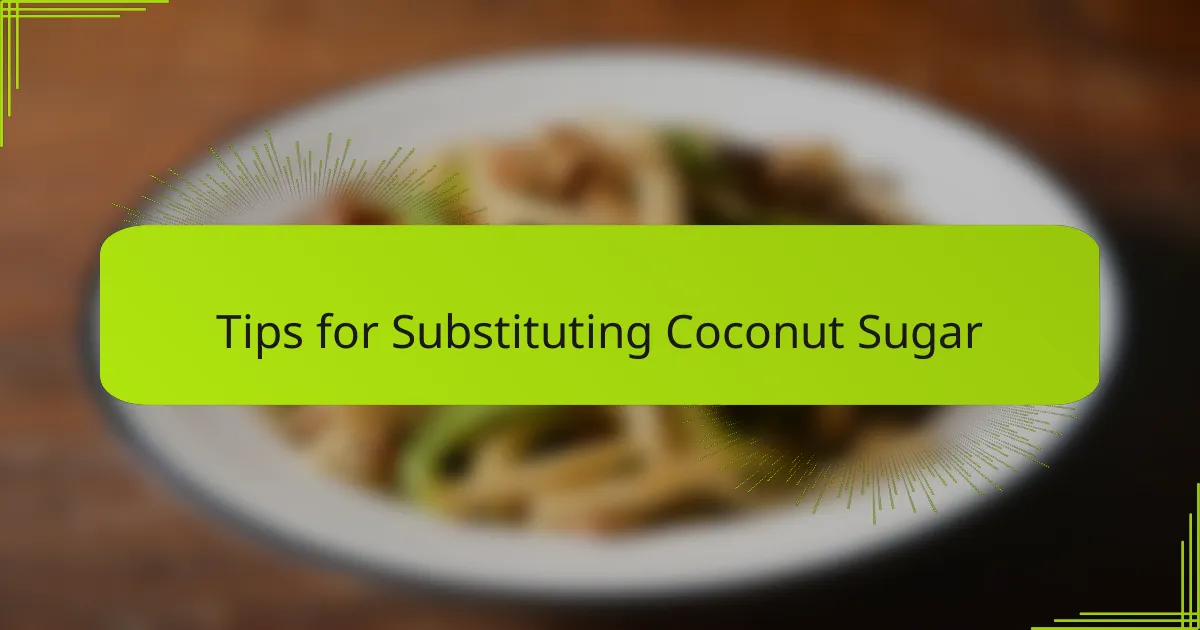
Tips for Substituting Coconut Sugar
When swapping coconut sugar for brown sugar, one tip I’ve learned is to slightly increase the liquids in your recipe. Because coconut sugar is drier and grainier, I’ve found that adding a teaspoon or two of extra moisture—like a splash of milk or an extra egg white—really helps keep my baked goods from turning out too crumbly. Have you ever noticed how a small tweak like that can save a recipe from being a total flop?
Another thing that caught me off guard was how coconut sugar doesn’t pack as tightly as brown sugar. When I first substituted it, I measured it cup for cup, but the texture felt different enough to affect the sweetness and density. Since then, I usually weigh my sugars instead; it feels more precise and takes the guesswork out of it.
Lastly, if you’re worried about losing that deep molasses taste, try combining coconut sugar with just a spoonful of molasses or even a tiny dash of vanilla extract. I did this once when baking gingerbread cookies, and it gave the flavor a richer dimension without overpowering coconut sugar’s gentle caramel notes. Have you ever mixed two sugars to get the best of both worlds? It’s a trick worth trying.
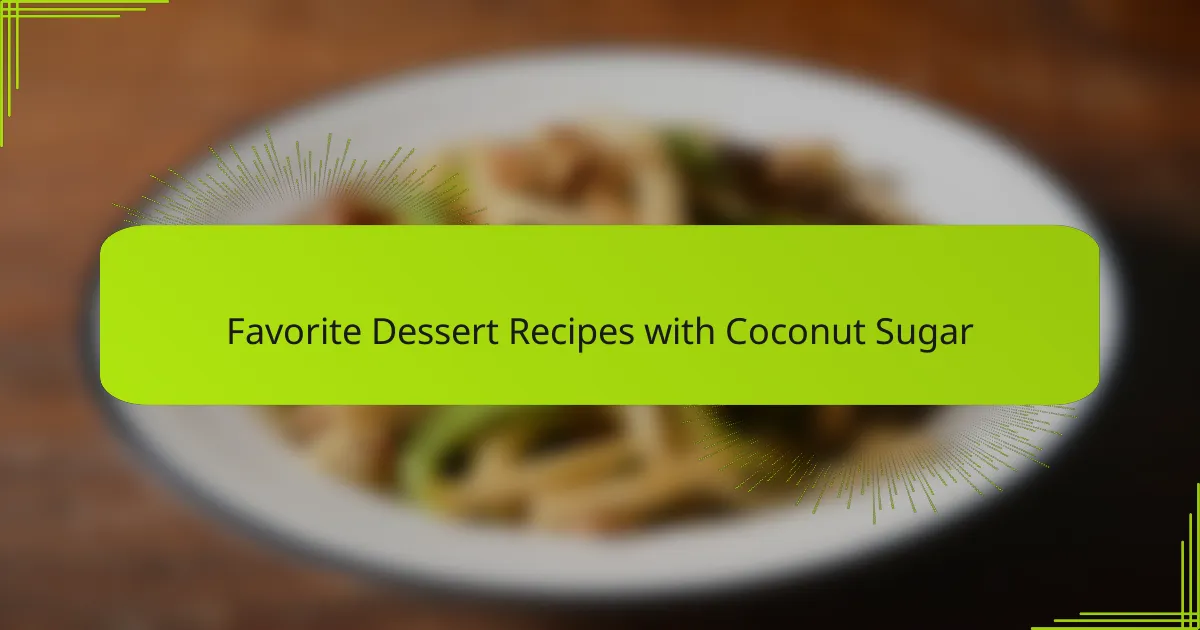
Favorite Dessert Recipes with Coconut Sugar
One of my absolute favorite desserts to make with coconut sugar has to be banana bread. I love how the caramel undertones of coconut sugar enhance the natural sweetness of ripe bananas without overwhelming them. Have you ever noticed that subtle depth coconut sugar adds? It’s like giving the bread a soft, warm hug rather than a sugary punch.
Another go-to recipe where coconut sugar really shines is in oatmeal cookies. The grainy texture of the sugar gives the cookies a slightly crisp edge, which contrasts nicely with the chewy center. I remember baking a batch for a family gathering and getting compliments on how these cookies tasted “both comforting and a bit fancy”—that’s the magic of coconut sugar in action.
For something a little more decadent, I’ve also experimented with chocolate brownies using coconut sugar instead of brown sugar. The result? A lighter color and a more delicate sweetness that lets the cocoa flavor pop. It made me rethink how richness can come from balance, not just intensity, and I found myself reaching for coconut sugar more often in recipes where I want the chocolate to truly sing.
